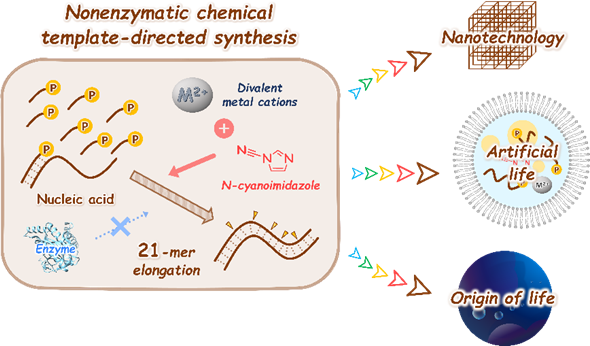Research
- 1. Synthesis of nanomaterials through energy-saving self-organization processes
- 2. Application of self-assembled protein nanofibers in the fields of energy & biomaterials
- 3. Construction of wearable & implantable energy-harvesting devices
- 4. Self-assembly of polymers in ionic liquids
- 5. Engineering Polypeptides to Control Cellular Organelle Function
- 6. Chemical template-directed synthesis of various nucleic acids
1. Synthesis of nanomaterials through energy-saving self-organization processes
It is theoretically predicted that arrays of inorganic nanoparticles (NPs) will exhibit functions that go beyond conventional principles. Self-assembly is an attracting approach for obtaining free-standing NP arrays in a large scale through energy-saving processes. We established techniques in which isotropic NPs self-assemble into 1D chain, 2D ring, and 3D vesicles in aqueous dispersions. Interplay between amphiphilic polymers and NPs is the key to these processes.
We are trying to elucidate the mechanism of these phenomena and applying the nano-objects as advanced functional materials.
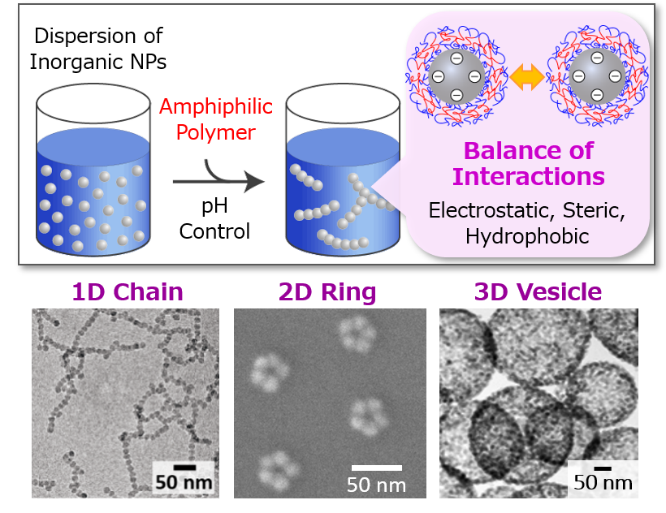
2. Application of self-assembled protein nanofibers in the fields of energy & biomaterials
We have developed artificial proteins that are inspired from elastin, an extracellular matrix protein that provide biological tissues with elasticity. The elastin-like proteins attract attention as scaffolds for regenerative medicine and as materials for small-diameter vascular grafts.
We are also trying to add electron/ion transport functions to the well-defined nanofibers of the elastin-like proteins, aiming to develop flexible conductive materials and create interfaces between living body and machines.
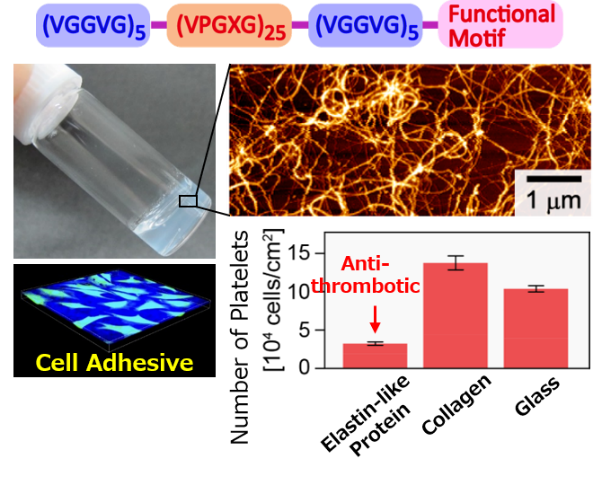
3. Construction of wearable & implantable energy-harvesting devices
We are constructing triboelectric nanogenerators that convert mechanical energy into electrical energy. The developments of wearable and implantable nanogenerators are our main targets by using biodegradable polymers as dielectric layers.
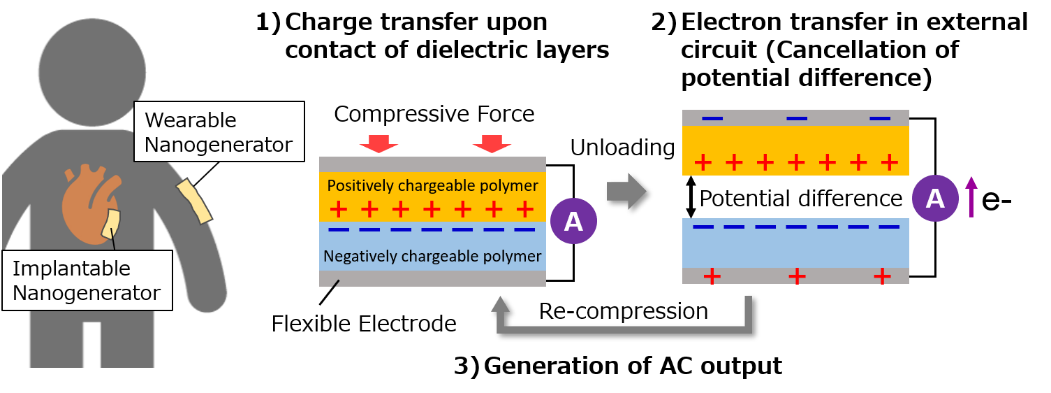
4. Self-assembly of polymers in ionic liquids
Polymers consisting of different types of monomers (i.e., copolymers) are known to self-assemble in solutions. We study the self-assembly behavior in “ionic liquids”. Because ionic liquids show negligibly small vaper pressure; thus, we can perform transmission electron microscopy (TEM) in solution to observe the self-assembly structure in motion. By using not only the liquid-phase TEM, but also small-angle X-ray scattering (SAXS) and rheology measurements, we study the structure and dynamics of many kinds of polymer self-assemblies in ionic liquids. We also explore the possibility that the polymer/ionic liquid systems may be applied to electronic devices.
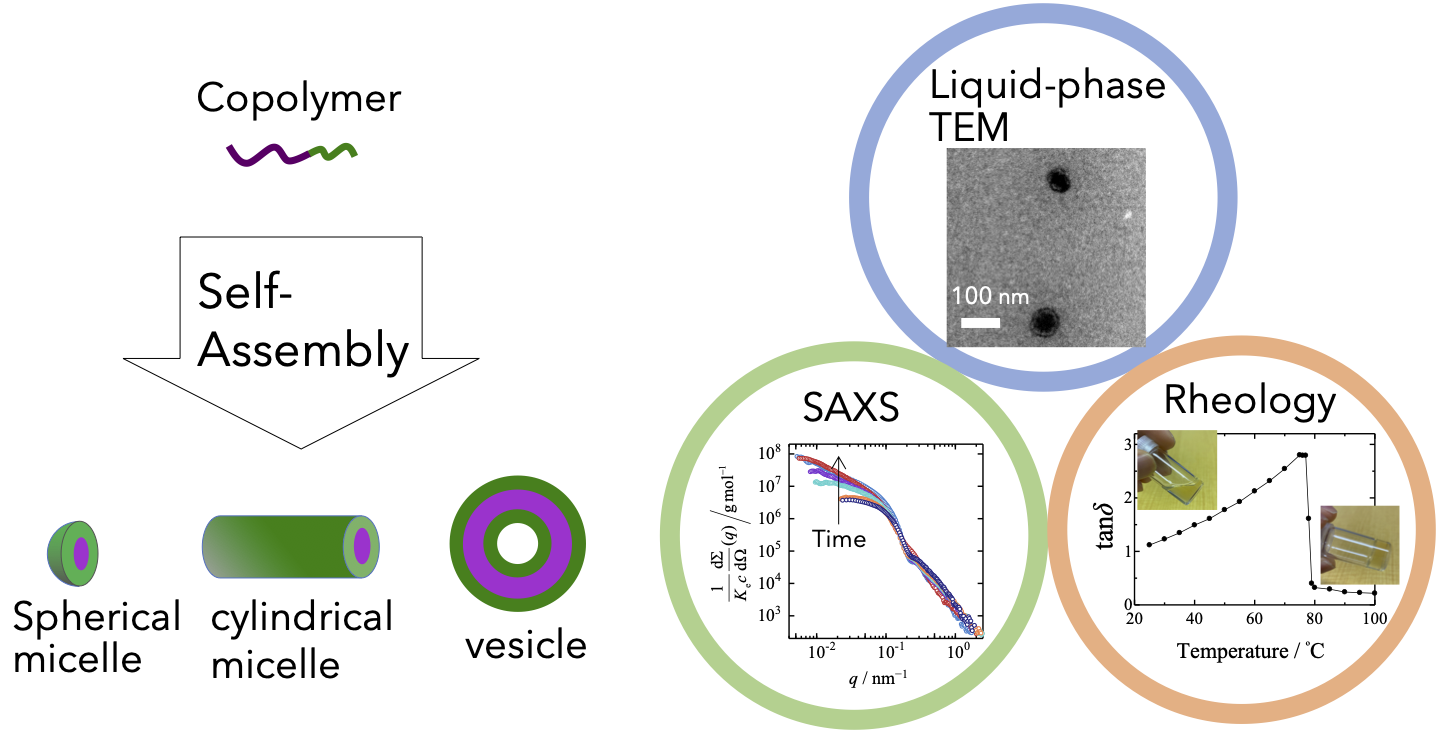
5. Engineering Polypeptides to Control Cellular Organelle Function
Our research is centered on controlling cellular behavior by targeting its internal command centers: the organelles. We design and build novel molecular tools from polypeptides, leveraging their amino acid sequences as a design blueprint. This allows us to engineer tools with remarkable specificity and diverse functions, capable of modulating the activity of a single type of organelle. This platform can advance both medical applications and basic cellular biology. In medicine, we are pioneering next-generation therapies to selectively correct cellular defects in diseases. Simultaneously, these tools serve as sophisticated probes for basic science, enabling us to dissect fundamental life processes and unlock the secrets of how cells function, age, and communicate.
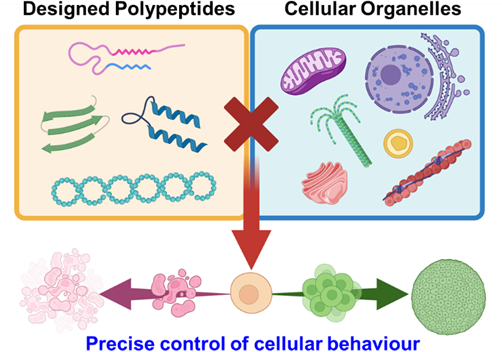
6. Chemical template-directed synthesis of various nucleic acids
A nonenzymatic pseudo-replication and pseudo-transcription system has been developed for DNA, RNA, and diverse artificial nucleic acids. The chemical ligation system, using a condensing agent and a divalent metal cation, will facilitate the creation of artificial life, advancements in nanotechnology, and research into origin of life in the future. Our current research focuses on the regulation of chemical template-directed synthesis and the self-organization of artificial nucleic acids.
